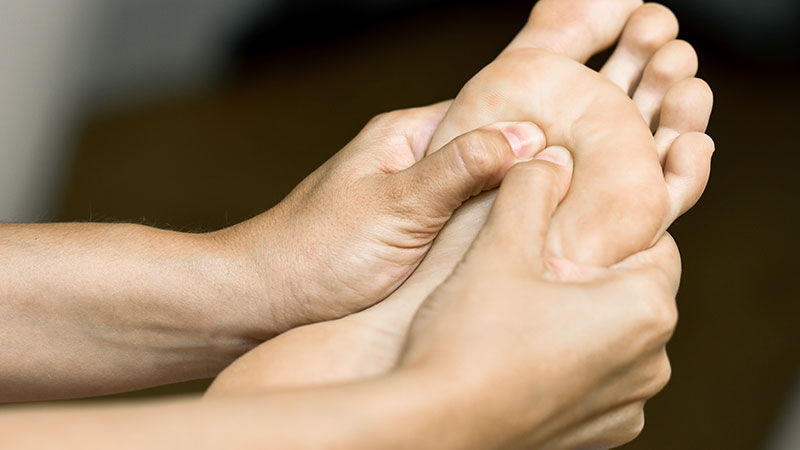Navigating the complexities of diabetes requires keen awareness, especially for men who may experience distinct signs and symptoms.
In this guide, we’ll explore 12 crucial indicators of diabetes in men, emphasizing the importance of early detection and proactive intervention.
From increased thirst to unexplained weight loss and erectile dysfunction, these symptoms serve as vital cues for potential glucose imbalances and underlying health concerns.
By recognizing and addressing these warning signs promptly, men can take control of their health, minimize the risk of complications, and embark on a journey towards improved well-being.
Don’t overlook these signs, empower yourself with the knowledge to make informed decisions about your health and future.

12 Signs and Symptoms of Diabetes in Men
Diabetes is a condition characterized by high levels of blood sugar, which can lead to various complications if left untreated.
While the symptoms of diabetes can manifest differently in men compared to women, both genders need to recognize the signs early on for timely intervention.
Here, we explore 12 common signs and symptoms of diabetes in men, each shedding light on potential indicators of the condition and emphasizing the importance of proactive health management.
1. Increased Thirst

Men with diabetes often experience persistent thirst, known as polydipsia. This results from the body’s attempt to flush out excess sugar through urine, leading to dehydration and an unquenchable sensation of dryness in the mouth.
Constantly reaching for fluids to alleviate thirst is a red flag for elevated blood sugar levels requiring medical attention.
2. Frequent Urination

Polyuria, or frequent urination, is a classic symptom of diabetes in men. Excess glucose overwhelms the kidneys’ ability to reabsorb it, prompting increased urine production.
Men may find themselves making frequent trips to the bathroom, particularly at night, disrupting sleep patterns and daily routines. Monitoring urinary frequency can provide valuable insights into blood sugar regulation.
3. Fatigue

Unexplained fatigue is a common complaint among men with diabetes. Fluctuating blood sugar levels compromise the body’s energy production, leaving individuals feeling persistently tired and drained despite adequate rest.
Fatigue can significantly impact daily functioning and quality of life, highlighting the need for effective diabetes management to restore energy levels and vitality.
4. Unexplained Weight Loss

Despite increased hunger and calorie intake, some men with undiagnosed diabetes may experience unintentional weight loss.
Insulin resistance or inadequate insulin production prevents cells from utilizing glucose effectively, prompting the body to break down fat and muscle tissue for energy.
Unexplained weight loss should prompt further investigation to rule out underlying metabolic imbalances, including diabetes.
5. Increased Hunger

Polyphagia, or increased hunger, is a common symptom of diabetes in men. Insulin resistance or insufficient insulin production prevents glucose from entering cells, leading to cellular starvation and persistent feelings of hunger.
Men may experience intense cravings or frequent snacking, even shortly after meals, as their bodies strive to compensate for inadequate energy utilization.
6. Blurred Vision

Changes in vision, such as blurred vision or difficulty focusing, can occur as a result of fluctuating blood sugar levels affecting the fluid balance in the eyes. Elevated glucose levels cause temporary changes in lens shape, impacting visual acuity.
Men with diabetes may notice vision changes that fluctuate with blood sugar levels, underscoring the importance of regular eye examinations for early detection of diabetic retinopathy.
7. Erectile Dysfunction

Erectile dysfunction (ED) is a common complication of diabetes in men, stemming from vascular and neurological damage.
Elevated blood sugar levels contribute to endothelial dysfunction and nerve damage, impairing blood flow to the penis essential for achieving and maintaining an erection.
Persistent ED warrants medical evaluation to identify and address underlying vascular or neurological issues.
8. Slow Healing of Wounds

Men with diabetes may experience delayed wound healing due to impaired circulation and compromised immune function. Elevated glucose levels impair white blood cell function and reduce oxygen delivery to tissues, slowing the healing process.
Minor cuts, bruises, or sores may take longer to heal and are at higher risk of infection if left untreated. Prompt wound care and glycemic control are essential for preventing complications.
9. Tingling or Numbness in Hands or Feet

Peripheral neuropathy, characterized by tingling, numbness, or pain in the hands and feet, is a common complication of diabetes. Prolonged exposure to elevated glucose levels damages peripheral nerves, disrupting sensory function and reducing sensation in affected areas.
Men may experience tingling or burning sensations, particularly in the extremities, necessitating regular neurological assessments to monitor nerve health.
10. Recurring Infections

Men with diabetes are more susceptible to recurring infections due to impaired immune function and elevated glucose levels creating a favorable environment for microbial growth.
Urinary tract infections, skin infections, and fungal infections are particularly common, requiring prompt treatment to prevent complications. Vigilant hygiene practices and glycemic control are essential for reducing the risk of recurrent infections.
11. Irritability

Mood changes, including irritability or mood swings, may occur in men with diabetes due to fluctuating blood sugar levels affecting neurotransmitter function.
Hypoglycemia, in particular, can trigger irritability, anxiety, or emotional instability as the brain struggles to maintain an adequate glucose supply.
Men may notice changes in mood corresponding to blood sugar fluctuations, emphasizing the importance of glycemic control for emotional well-being.
12. Darkened Skin in Certain Areas

Acanthosis nigricans, characterized by darkened, velvety skin patches, often develops in areas of the body with folds or creases, such as the neck, armpits, or groin.
This skin condition is associated with insulin resistance and may serve as a visual indicator of metabolic dysfunction, including diabetes. Monitoring changes in skin pigmentation can provide valuable insights into underlying metabolic imbalances requiring medical attention.
Recognizing these signs and symptoms of diabetes in men is crucial for early detection and prompt intervention.
If you or someone you know experiences any of these symptoms, it’s essential to consult a healthcare professional for proper evaluation and management.
By staying vigilant and proactive about health, men can take control of their diabetes and minimize the risk of complications in the long term.
Differences Between Diabetes in Men and Women
Diabetes affects millions of individuals worldwide, but the way it manifests and impacts health can differ between men and women. Understanding these gender-specific differences is crucial for effective management and prevention strategies.
1. Hormonal Influences
Hormonal fluctuations play a significant role in diabetes development and management, and these fluctuations differ between men and women.
For instance, women experience hormonal changes during menstruation, pregnancy, and menopause, all of which can affect blood sugar levels and insulin sensitivity.
Men, on the other hand, do not experience such cyclical hormonal variations, leading to different patterns of glucose metabolism and diabetes risk.
2. Risk Factors
While many risk factors for diabetes are common to both genders, some factors may disproportionately affect men or women.
For example, abdominal obesity is a significant risk factor for diabetes in both genders, but men tend to accumulate visceral fat, which is more strongly associated with insulin resistance and Type 2 diabetes.
In contrast, women may be more prone to developing diabetes due to factors such as polycystic ovary syndrome (PCOS), gestational diabetes, or a history of preeclampsia during pregnancy.
3. Symptom Presentation
The symptoms of diabetes can vary between men and women. Men are more likely to experience classic symptoms such as increased thirst, frequent urination, and unexplained weight loss.
Women, however, may have subtler symptoms or attribute them to other health issues. For instance, symptoms like fatigue, urinary tract infections, and yeast infections may be more common in women with diabetes.
4. Cardiovascular Risk

Both men and women with diabetes are at increased risk of cardiovascular complications such as heart disease and stroke.
However, women with diabetes have been found to have a higher relative risk of cardiovascular disease compared to men with diabetes.
This heightened risk may be due to differences in risk factor management, hormonal influences, and the presence of additional risk factors such as depression and autoimmune conditions.
5. Impact of Pregnancy
Pregnancy introduces unique considerations for women with diabetes. Gestational diabetes, which occurs during pregnancy, can increase the risk of complications for both the mother and the baby.
Women with pre-existing diabetes (Type 1 or Type 2) face challenges in managing blood sugar levels during pregnancy to reduce the risk of birth defects, macrosomia (large birth weight), and other complications.
6. Long-Term Complications
While both men and women with diabetes are at risk of long-term complications such as neuropathy, nephropathy, and retinopathy, some complications may manifest differently or be more prevalent in one gender.
For example, diabetic neuropathy may present earlier and be more severe in men, while women may be at higher risk of urinary incontinence and sexual dysfunction due to nerve damage.
7. Treatment Response
Treatment strategies for diabetes may need to be tailored to account for gender-specific differences in response and tolerance.
For instance, certain medications commonly used to treat Type 2 diabetes, such as metformin and sulfonylureas, may have different efficacy and side effect profiles in men and women.
Additionally, women with diabetes may require specialized care during pregnancy to optimize maternal and fetal outcomes.
Understanding the gender-specific differences in diabetes can help healthcare providers deliver more personalized and effective care.
By considering factors such as hormonal influences, symptom presentation, cardiovascular risk, pregnancy-related complications, long-term complications, and treatment response, clinicians can develop tailored management plans that address the unique needs of both men and women with diabetes.
Additionally, raising awareness about these differences can empower individuals to take proactive steps to manage their diabetes and reduce their risk of complications.
Wrapping Up
Recognizing the signs and symptoms of diabetes in men is crucial for early detection and intervention.
From increased thirst and frequent urination to unexplained weight loss and erectile dysfunction, these indicators serve as red flags for potential glucose imbalances and underlying health concerns.
By staying vigilant and seeking timely medical attention, men can take proactive steps to manage their diabetes effectively and reduce the risk of complications.
Furthermore, understanding the gender-specific nuances of diabetes presentation and risk factors enables healthcare providers to deliver personalized care tailored to each individual’s needs.
With proper awareness, education, and support, men can navigate the challenges of diabetes with confidence, leading healthier and more fulfilling lives.
